'Predators do have a place in the prairies': Albertan photographs endangered swift foxes
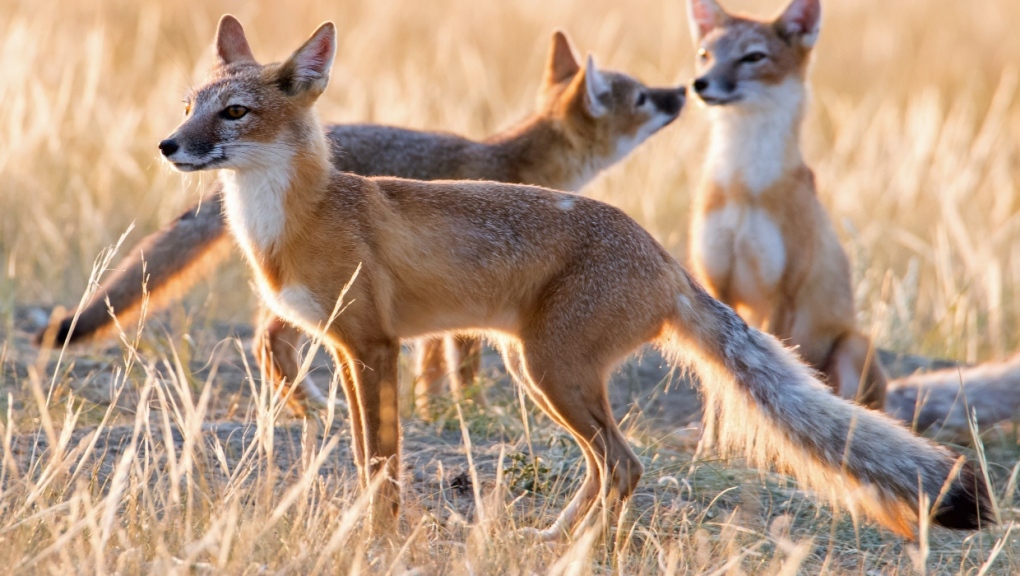 Swift Foxes photographed by Mike Borlé in an area south of Medicine Hat on July 11, 2021. (Mike Borlé)
Swift Foxes photographed by Mike Borlé in an area south of Medicine Hat on July 11, 2021. (Mike Borlé)
It was a warm Sunday in July when Mike Borlé stumbled upon a single swift fox in a rural area south of Medicine Hat.
Borlé is an environmental coordinator by trade and works for wind power projects in the province, but is also an amateur wildlife photographer.
"I always have my camera with me whenever I'm touring around the southeastern part of the province,” he explained.
He was birding when he spotted the fox, and as he kept watching, he said another adult and two kits emerged from a den.
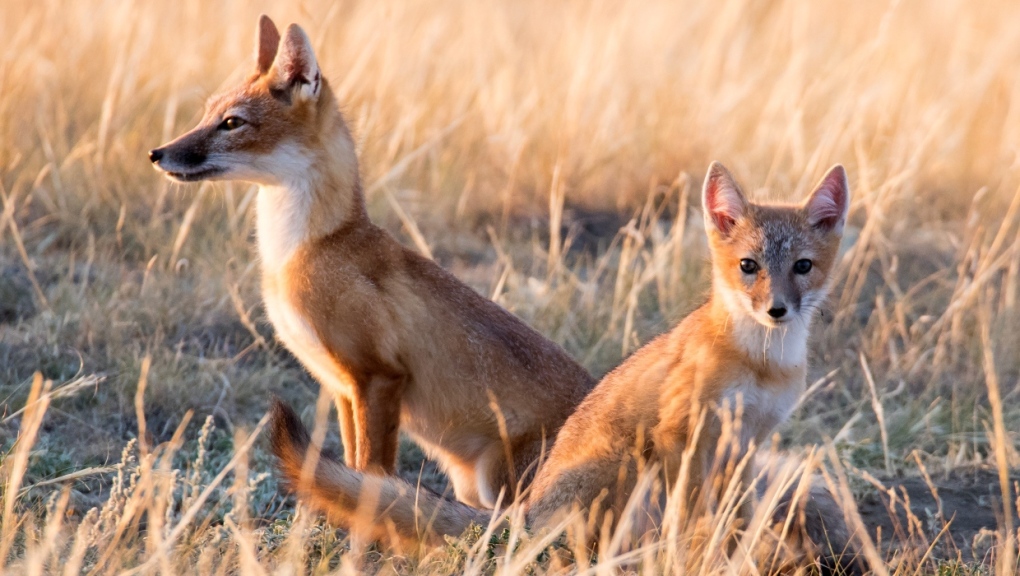 Swift Foxes photographed by Mike Borlé in an area south of Medicine Hat on July 11, 2021. (Mike Borlé)"Literally, I just sat on the roadside probably about 60 metres from them and watched them play and interact with each other," he said.
Swift Foxes photographed by Mike Borlé in an area south of Medicine Hat on July 11, 2021. (Mike Borlé)"Literally, I just sat on the roadside probably about 60 metres from them and watched them play and interact with each other," he said.
"That situation was very, very cool. It was about an hour before sunset and the light was about perfect."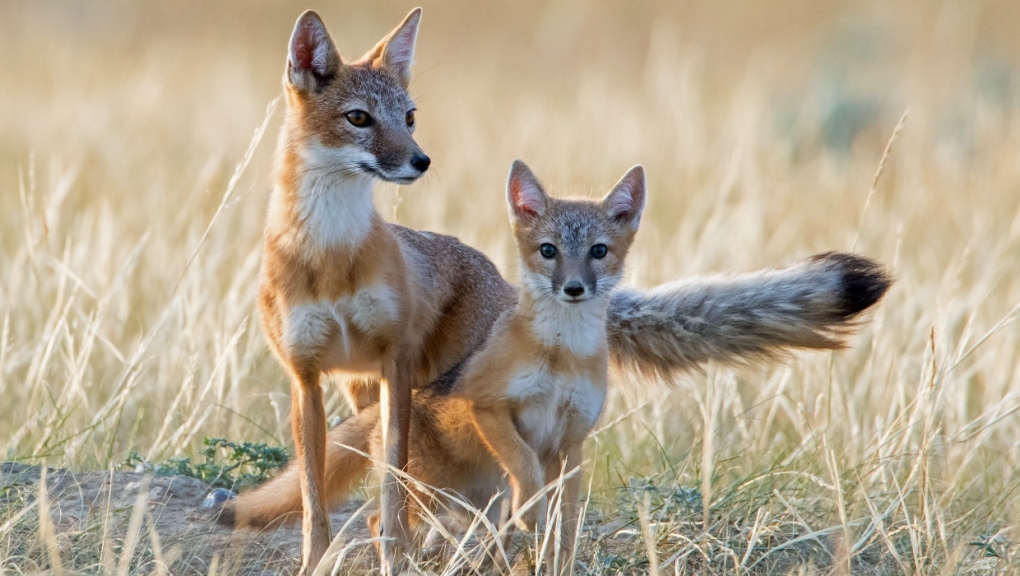 Swift Foxes photographed by Mike Borlé in an area south of Medicine Hat on July 11, 2021. (Mike Borlé)"The most surreal part of that experience was they didn't have any concern with me," he said. "They're actually fairly well known for being relatively indifferent to humans."
Swift Foxes photographed by Mike Borlé in an area south of Medicine Hat on July 11, 2021. (Mike Borlé)"The most surreal part of that experience was they didn't have any concern with me," he said. "They're actually fairly well known for being relatively indifferent to humans."
"They really don't seem to have a natural fear – like coyotes or wolves generally would, for example, or red foxes for that matter.
"I actually had the adult (foxes) at one point turn away from me – both sitting side by side and (they) turned away from me. The kits were in between me and them and they had no fear."
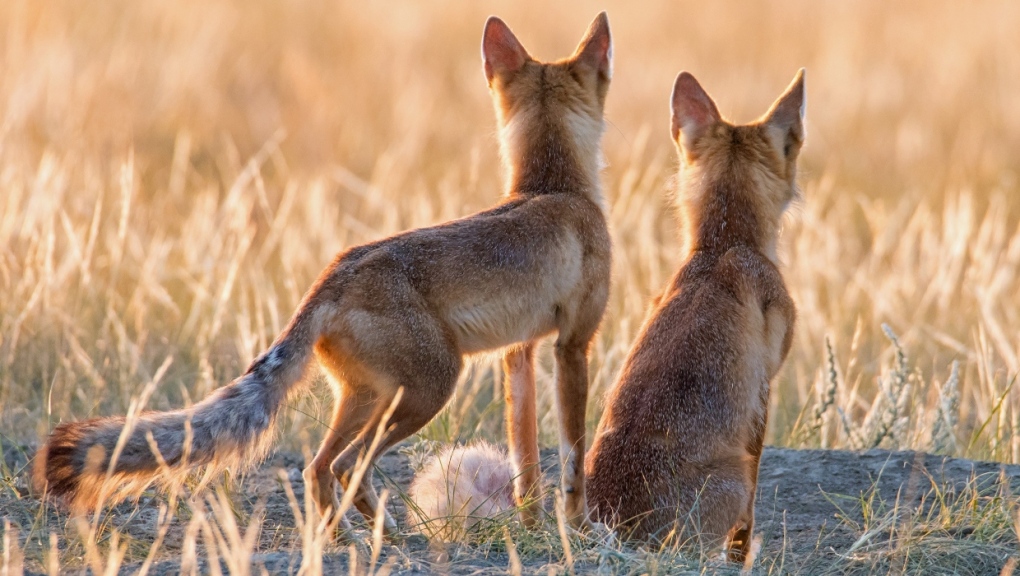 Swift Foxes photographed by Mike Borlé in an area south of Medicine Hat on July 11, 2021. (Mike Borlé)
Swift Foxes photographed by Mike Borlé in an area south of Medicine Hat on July 11, 2021. (Mike Borlé)
The swift fox was once abundant in Alberta but populations declined as a result of habit loss and it is now considered endangered.
"It's not a once in a lifetime-type thing necessarily, but it's still extremely rare," Borlé said of his sighting.
"There's been just a very small handful of sightings in the couple of decades."
"That’s the kind of thing that really keeps me interested in wildlife and birds; we get to share those moments," he said. "I've been doing this for a long time. I've been working in the environmental field now for about 25 years, but these experiences, they don't come along very often."
Borlé has observed four species of wild dogs native to the province this year, a so-called canid quadfecta – the coyote and red fox, which are fairly common, and the grey wolf and swift fox, which are uncommon to see.
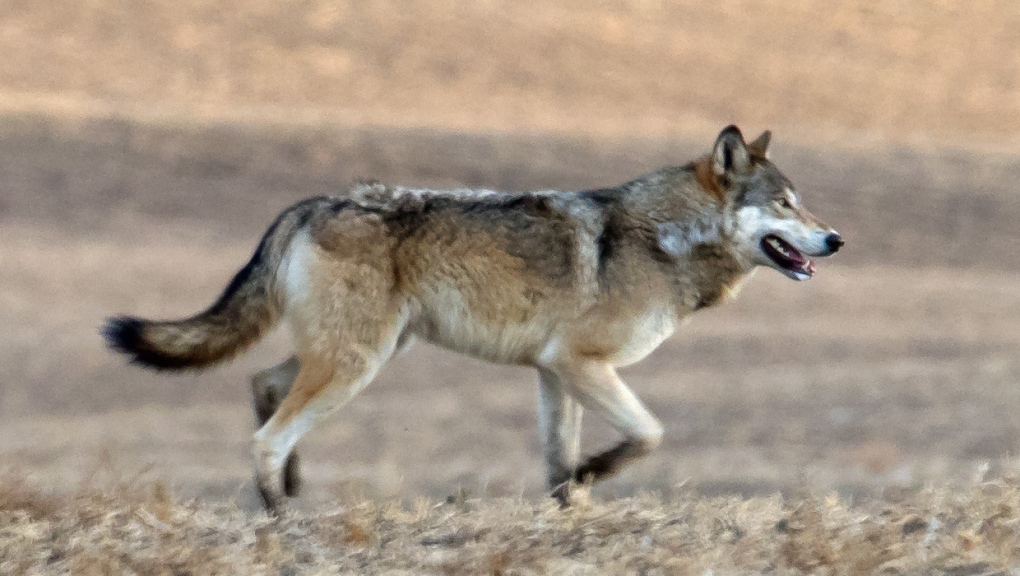 A grey wolf photographed by Mike Borlé in Alberta in 2021. (Mike Borlé)His friend, author and naturalist Chris Fisher, shared the feat on Twitter.
A grey wolf photographed by Mike Borlé in Alberta in 2021. (Mike Borlé)His friend, author and naturalist Chris Fisher, shared the feat on Twitter.
"I don't think anyone else has done that in over 100 years," he tweeted.
"It's a significant thing," Borlé said, adding he was thrilled to see the grey wolf.
"For the best part of 100 years there haven't been wolves in the prairies in any significant way."
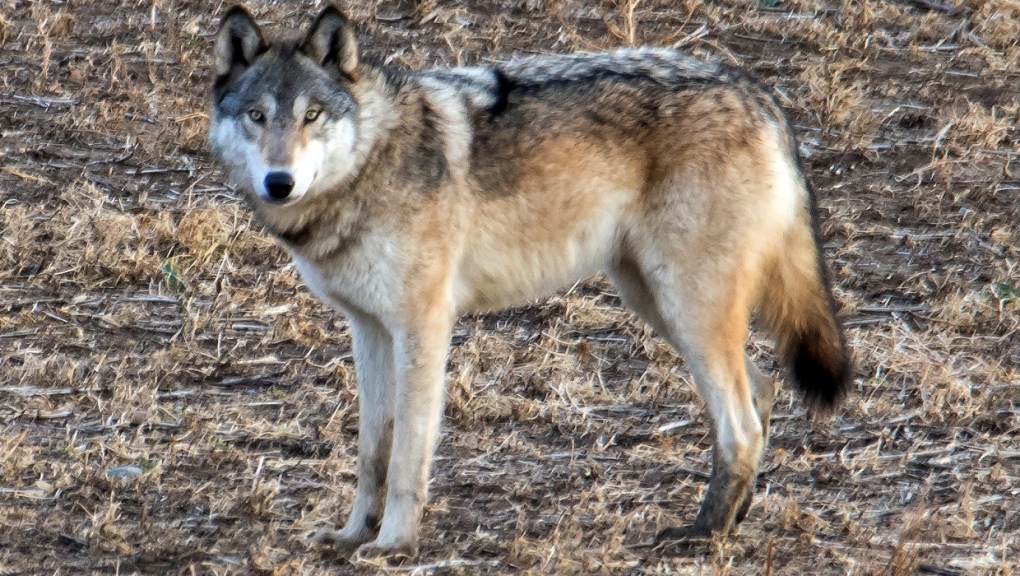 A grey wolf photographed by Mike Borlé in Alberta in 2021. (Mike Borlé)This spring, not too far from the same area he saw the swift foxes, Borlé said he was able to capture photos of a burrowing owl, which is also an endangered species.
A grey wolf photographed by Mike Borlé in Alberta in 2021. (Mike Borlé)This spring, not too far from the same area he saw the swift foxes, Borlé said he was able to capture photos of a burrowing owl, which is also an endangered species.
"There aren't really all that many species in Alberta that I haven't spent a little bit of time with, but the burrowing owl was one and swift fox was the other."
Borlé shared photos of the foxes on Twitter. He says and he believes social media plays an important role in environment education, helping teach people to be more environmentally conscious and aware.
After his decades working in Alberta, Borlé said he has noticed a difference recently in the way ranchers and farmers view predatory animals.
"These predators do have a place in the prairies."
"People's attitudes in rural Alberta are changing," he said, saying people seems to be taking the opportunity to observe Alberta's predatory species instead of looking at them as a threat or a pest.
"People are starting to value our predators far more than in the past. People are just leaving them be … people are allowing them to just live.
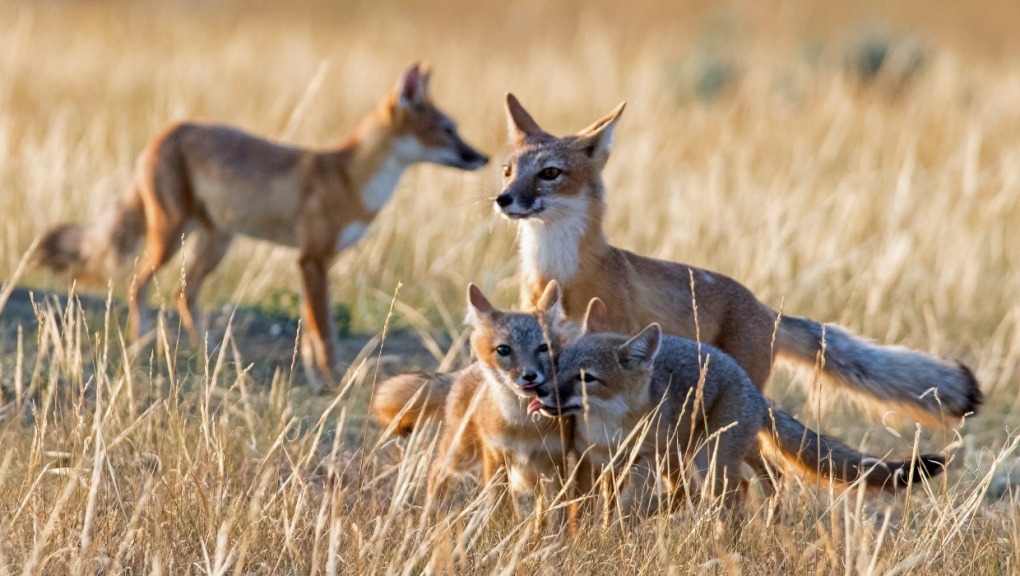 Swift Foxes photographed by Mike Borlé in an area south of Medicine Hat on July 11, 2021. (Mike Borlé)"That's a pretty major conservation success story," he said.
Swift Foxes photographed by Mike Borlé in an area south of Medicine Hat on July 11, 2021. (Mike Borlé)"That's a pretty major conservation success story," he said.
"We're in a new era of attitudes towards predators. People are making the decision to just coexist with them."
Borlé believes that mentality will only continue to grow as people become more environmentally conscious.
"People are becoming more aware of their impact on the environment and our wildlife," he said.
CTVNews.ca Top Stories

Prime Minister Trudeau to meet Donald Trump at Mar-a-Lago
Prime Minister Justin Trudeau has landed in West Palm Beach, Fla., on Friday evening to meet with U.S.-president elect Donald Trump, sources confirm to CTV News.
'Mayday! Mayday! Mayday!': Details emerge in Boeing 737 incident at Montreal airport
New details suggest that there were communication issues between the pilots of a charter flight and the control tower at Montreal's Mirabel airport when a Boeing 737 made an emergency landing on Wednesday.
Hit man offered $100,000 to kill Montreal crime reporter covering his trial
Political leaders and press freedom groups on Friday were left shell-shocked after Montreal news outlet La Presse revealed that a hit man had offered $100,000 to have one of its crime reporters assassinated.
Questrade lays off undisclosed number of employees
Questrade Financial Group Inc. says it has laid off an undisclosed number of employees to better fit its business strategy.
Cucumbers sold in Ontario, other provinces recalled over possible salmonella contamination
A U.S. company is recalling cucumbers sold in Ontario and other Canadian provinces due to possible salmonella contamination.
Billboard apologizes to Taylor Swift for video snafu
Billboard put together a video of some of Swift's achievements and used a clip from Kanye West's music video for the song 'Famous.'
Musk joins Trump and family for Thanksgiving at Mar-a-Lago
Elon Musk had a seat at the family table for Thanksgiving dinner at Mar-a-Lago, joining President-elect Donald Trump, Melania Trump and their 18-year-old son.
John Herdman resigns as head coach of Toronto FC
John Herdman, embroiled in the drone-spying scandal that has dogged Canada Soccer, has resigned as coach of Toronto FC.
Weekend weather: Parts of Canada could see up to 50 centimetres of snow, wind chills of -40
Winter is less than a month away, but parts of Canada are already projected to see winter-like weather.
































